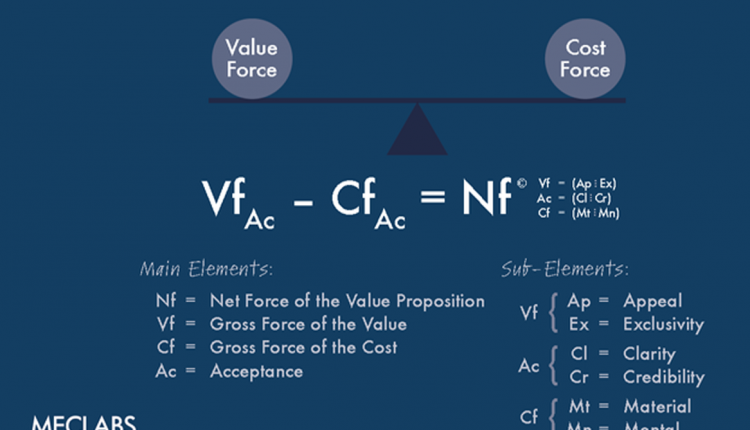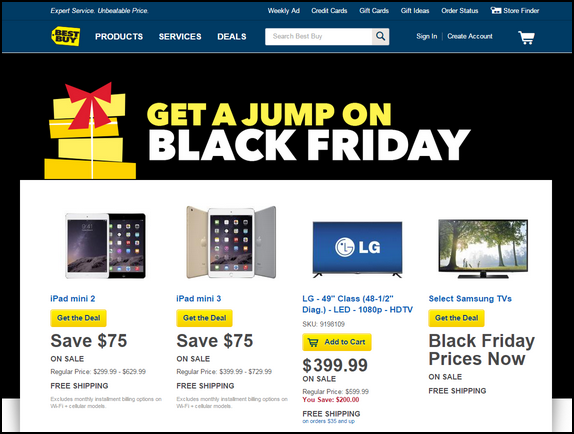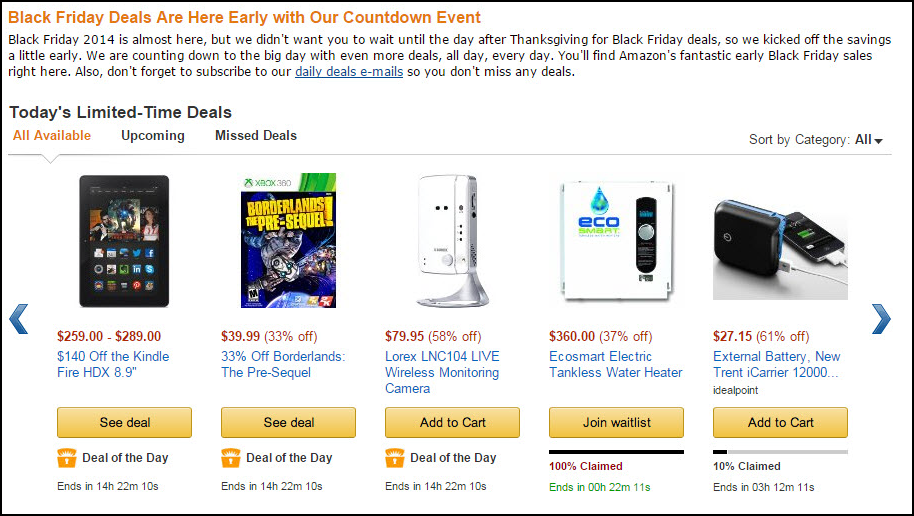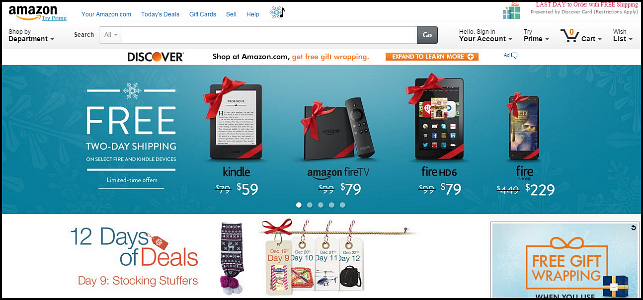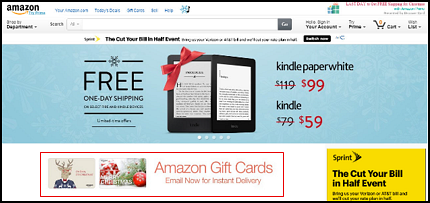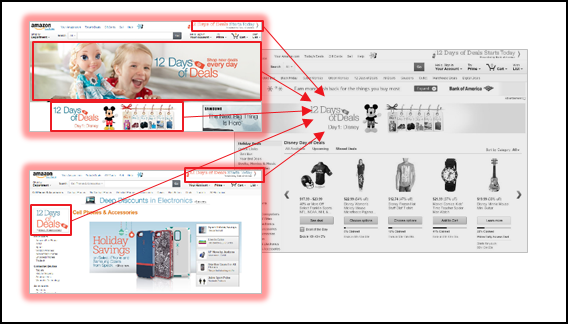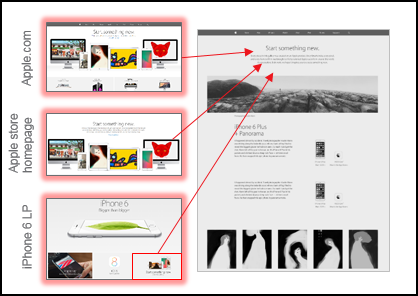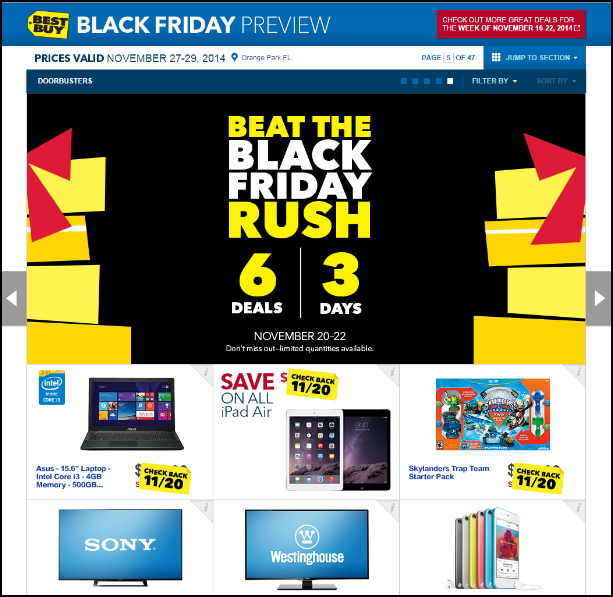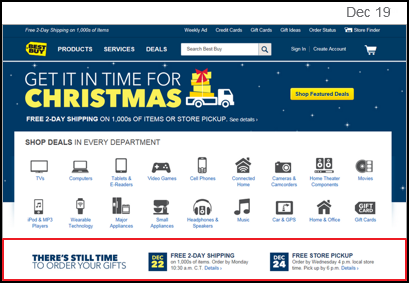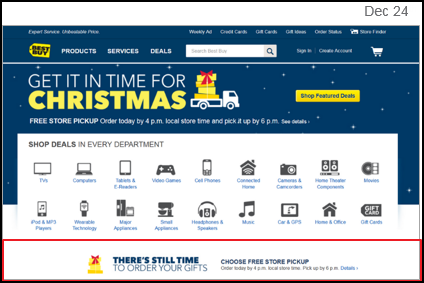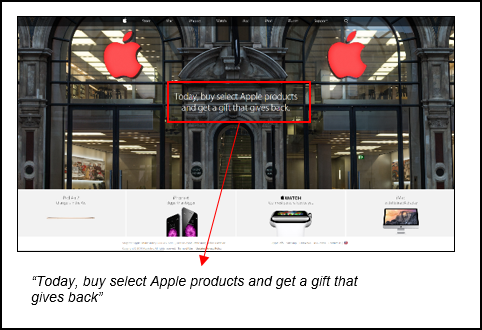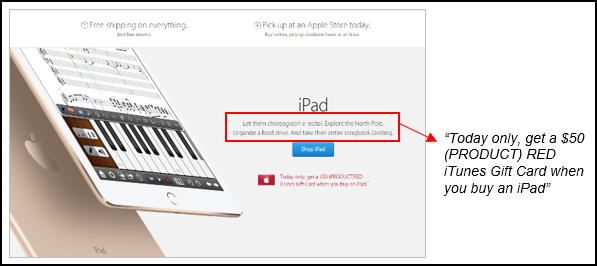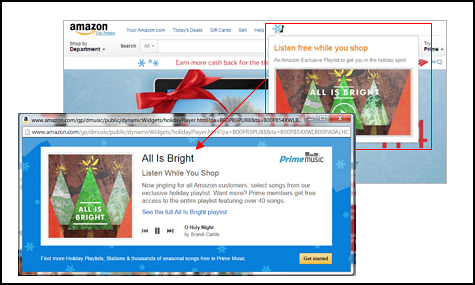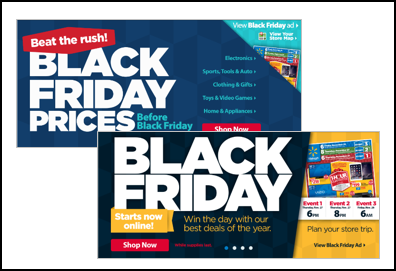In today’s MarketingExperiments blog post, we’ll look at the 2014 holiday campaigns of Amazon, Best Buy, Apple and Walmart and see what you can learn from their efforts. If you sell anything at all — from books to electronics to glow-in-the-dark toilet paper — you compete with at least one, if not all, of these retailers.
More than 500 data points gathered and analyzed over 42 days
To understand the information you’re about to see, let’s take a quick look at the methodology. 16 Web Research Analysts from MECLABS Institute (MarketingExperiments’ parent research organization) spent 42 days during the Black Friday (November 17 – November 29, 2014), Holidays (December 7 – 29) and New Year (December 30 – January 4, 2015) sales periods, analyzing three to five desktop webpages per retailer. This effort was led by Jonathon Yates, Market Intelligence Manager; Sarah Russell, Research Manager; and Gaby Paez, Associate Director of Research.
They assessed the campaigns using the MECLABS Value Proposition heuristic, asking:
- How appealing (relevant, important and urgent) is the offer?
- How exclusive is the offer?
- How clear is the value of the offer?
- How credible is the offer?
Below are the key lessons you can learn from these major brands.
Lesson #1: Answer shoppers’ questions before they think to ask them
Your shoppers likely come to your website with a few key (but subconscious) questions in their mind. If your site doesn’t clearly and quickly address them before these questions actually bubble up to their consciousness — “Wait a minute … is this really a deal?” — they will bounce and look for a gift somewhere else.
So let’s take Black Friday as an example. Many shoppers are specifically looking for deals, so show them where they can get deals.
To give you an idea for your own site, here’s how Amazon prominently displayed its Black Friday deals.
Best Buy used a flat background color with short headlines to capture visitors’ attention quickly.
But “Can I get a Black Friday deal?” is only the macro-question. There are likely micro-questions under that macro-question, such as …
- How much am I saving?
- When does the deal end?
- Is this a good deal?
Best Buy showed customers how much they’re saving for each product (“Save $75”), clearly labeled each product as “On Sale” and reinforced the message with a “Get the Deal” button. This call-to-action copy communicated to shoppers that this was not simply a purchase; it was a unique deal.
Amazon.com similarly provided clarity about the savings, choosing a percent (33%) off approach instead of Best Buy’s actual savings (“Save $75”) tactic. It also included information about when the deal ended (“Ends in 14h 22m 10s”) and added some social proof to show that these were good deals because other people were buying them (“100% claimed”).
Not only does answering customer questions on your website help increase conversion, answering their questions using the language they would use could help with organic search as well.
“During any major holiday, consumers are searching for ‘deals’ (e.g., Black Friday deals, Cyber Monday deals, etc.),” Gaby said. “Not using these terms in your holiday marketing is missing a significant portion of organic traffic.”
Lesson #2: Plan offers with the holiday calendar in mind
Elements of the offer that are important to shoppers change throughout the holiday season. What shoppers are looking for early in the holiday season can be vastly different from what they need two days before Christmas or Hanukkah.
Early in the holiday season, Amazon and Best Buy were very deal-focused (see the screenshots in Lesson #1).
“We know consumers do research online to find the best possible deal. Digital marketers’ jobs should focus on making consumers’ research so easy and pleasant that they don’t have to think twice to purchase from you,” Gaby said.
“Moreover, digital marketers should bank on the ‘convenience’ benefit of buying online to convince people to shop earlier. Amazon and Best Buy know it and they [made] sure their customers knew it too — ‘Beat the Black Friday Rush, Get a jump on Black Friday, Black Friday deals start now online, etc.’”
Note how Amazon changed the focus of its offer later in the holiday season. On December 19, saving money was still important, but Amazon also promoted its “Day 9” of a “12 Days of Deals” encouraging shoppers to buy stocking stuffers.
Then on December 22, Amazon used the same homepage real estate to advertise a product that can be delivered electronically — “Amazon Gift Cards. Email now for instant delivery.”
Your consumers have likely heard about (or even experienced) serious delivery issues of last-minute gifts, which may make them less likely to trust the reliability of physical product delivery so close to the holiday.
Lesson #3: Drive visitors to holiday-focused offers and landing pages
No matter where visitors landed on Amazon’s website, they could get easy access to holiday campaign pages. Ads were placed strategically on highly visible areas of the most popular webpages — the hero image on Amazon’s homepage, above filters on gridwall pages and in the top-right corner below the cart icon sitewide.
Apple had clear calls-to-action throughout its site as well — on its homepage, on the Apple store homepage and on the iPhone 6 landing page.
“Project timelines, approvals and processes tend to get in the way of thinking through the customer experience,” Gaby said. For the 2015 holiday season, she recommend digital marketers keep two simple tactics in mind:
- Have at least a single landing page that presents all your holiday offers in one place and allows customers to shop from it (e.g., for Black Friday have a Black Friday offers page, for Christmas have a Christmas offers page, etc.)
- Make sure you have highly visible ads with very simple and clear holiday message sending traffic to your holiday offers page(s)
Lesson #4: Communicate clear urgency
There are many reasons marketers love the holidays, but one of them has to be the clear deadline that forces a purchase decision — December 25 (and for Jewish shoppers, December 6 to 14 in 2015).
But that isn’t the only deadline marketers can leverage. Best Buy presented clear communication of deadlines throughout the holiday season and a good use of design elements to make urgency messages stand out.
There was a prominent deadline for its Black Friday sale (November 29).
On December 19, it presented deadlines for “free 2-day shipping” (December 22) as well as “free store pickup” (December 24).
On December 24, the deadline focus became “Order today by 4 p.m … Pick up by 6 p.m.”
Lesson #5: Provide tangible incentives
During Thanksgiving week, Apple offered an incentive that had two benefits — a branded gift card that came with a donation to (PRODUCT)RED, a licensed brand that raises awareness and funds to help eliminate HIV/AIDS in Africa.
Shoppers are impatient. They don’t necessarily want to wait until the holidays to get something. With this incentive, not only are they checking an item off their list (buy a gift for someone), but they get an immediate gift for themselves as well. By getting an iTunes gift card they can use right away, the value is much more tangible to the shopper.
I may make shoppers sound greedy, but they are truly altruistic this time of year. After all, this is the giving season. So partnering with a charitable organization multiplied the impact of the gift card for Apple shoppers.
It pulled each lever of the triumvirate of the giving season:
- Something for the gift recipient
- Something for the giver (the purchaser)
- Something for charity as well
Lesson #6: Don’t overlook the brick-and-mortar experience
In August 2015, MarketingSherpa (MarketingExperiments’ sister publishing brand) conducted research with 2,021 American consumers. When asked how customers like to discover new products, the most frequent answer (given by 59% of respondents) was “in-store browsing,” more popular then “using a search engine” (47%) or “through online advertising” (27%).
There is something special about the holiday shopping experience. The massive Christmas trees and menorahs in the mall. The nip in the air. Holiday tunes triggering childhood memories.
Amazon tried to replicate that experience by making its Prime Holiday playlist free to all customers — “Listen free while you shop. An Amazon Exclusive Playlist to get you in the holiday spirit.” (As a secondary benefit, this free sampling may also have encouraged purchases of Amazon Prime memberships as well.)
Of course, if you’ve ever been shopping in a physical store during the holidays, you know it’s not just candy canes and “Ho Ho Ho”s. Walmart tried to offer a solution to the downsides of holiday shopping, offering to help customers “beat the rush” and “plan your store trip.”
The sale doesn’t end with the purchase
One thing I didn’t mention in the above analysis is brand. You could use the exact same tactic as one of the above retailers, and get significantly worse (or better) results.
These tactics are only one part of the customer-decision making process. If they have a shopping experience — from initial purchase to received product value to customer support — with any of the above brands, that experience will heavily influence how customers view these messages. So make sure to not just focus on the sale, but deliver the value you promise in the offer after the sale.
That way, you can set yourself up for a successful holiday shopping season in 2016 as well.
What would you like us to research next?
We’re currently planning our next research project from MECLABS Institute, and ecommerce is a likely subject area. What research would help you improve results and better serve customers? Feel free to propose an ecommerce-related research question in the comments section below.
You can follow Daniel Burstein, Director of Editorial Content, MECLABS Institute, @DanielBurstein.
You might also like
Translate Holidays into Dollars: How to Structure Your Offer’s Metamorphosis
Holiday Marketing: 3 last-minute ideas to boost conversion [From the MarketingSherpa blog]
Ecommerce Fulfillment: Preparing for the holiday shopping season [From MarketingSherpa]
MarketingSherpa Summit 2016 — At the Bellagio in Las Vegas, February 22-24



